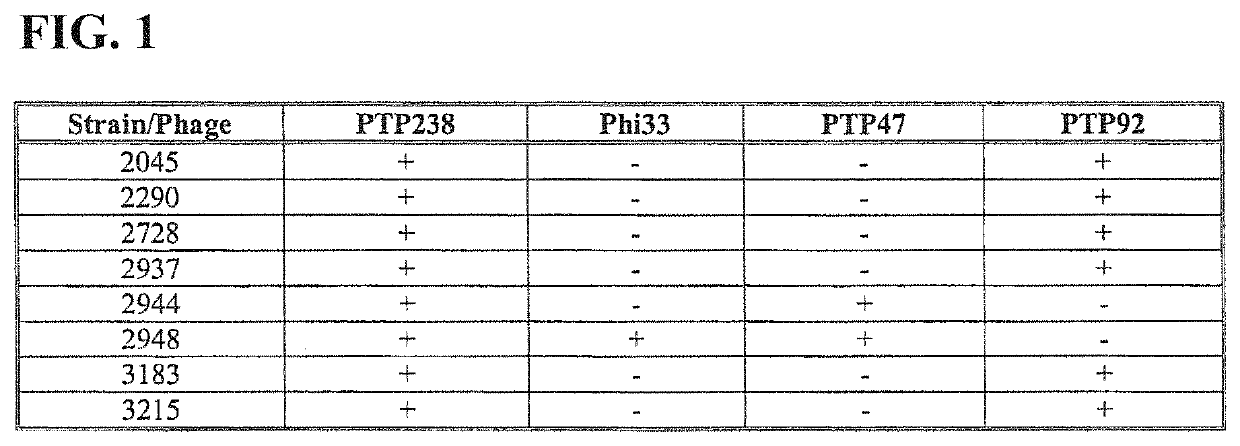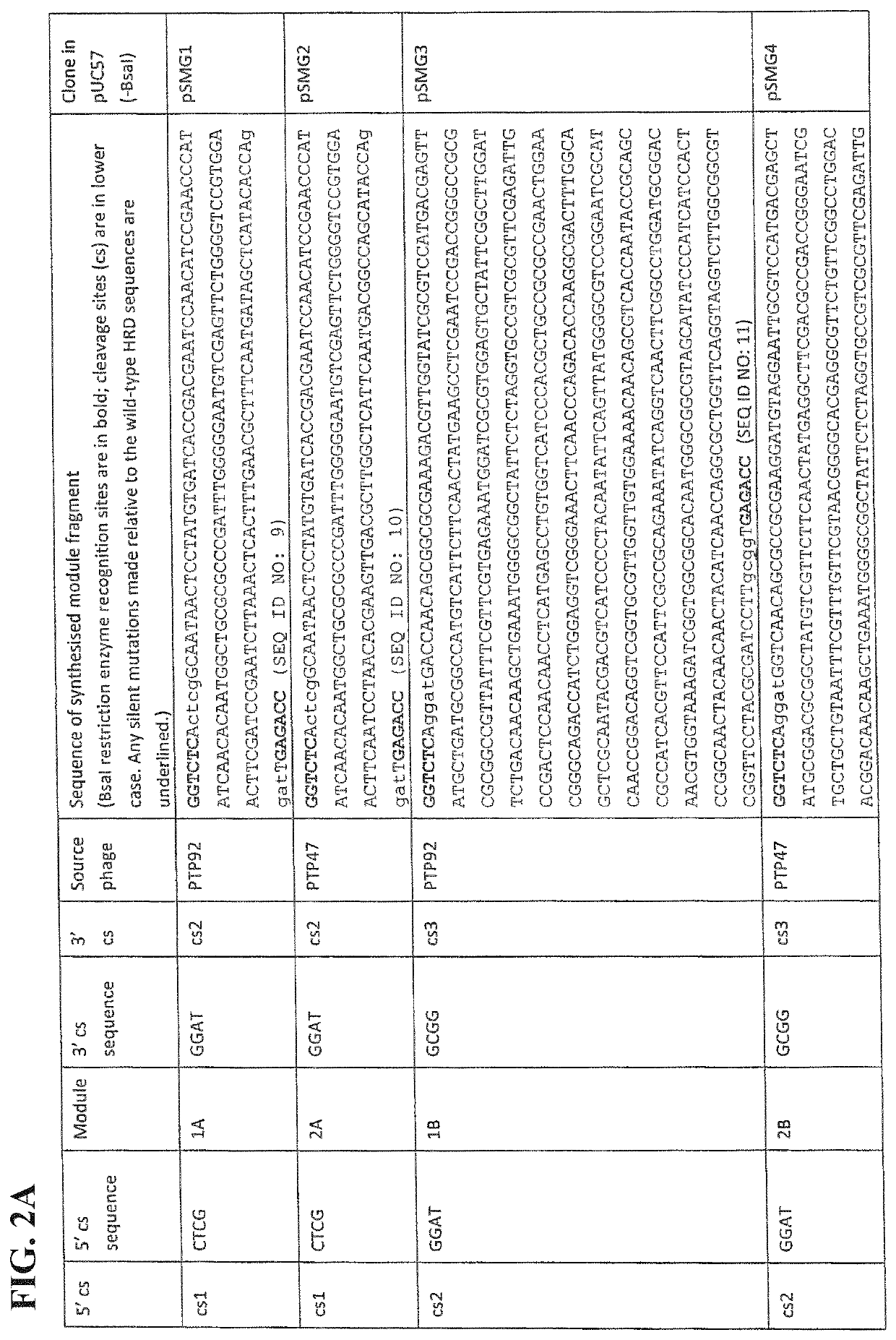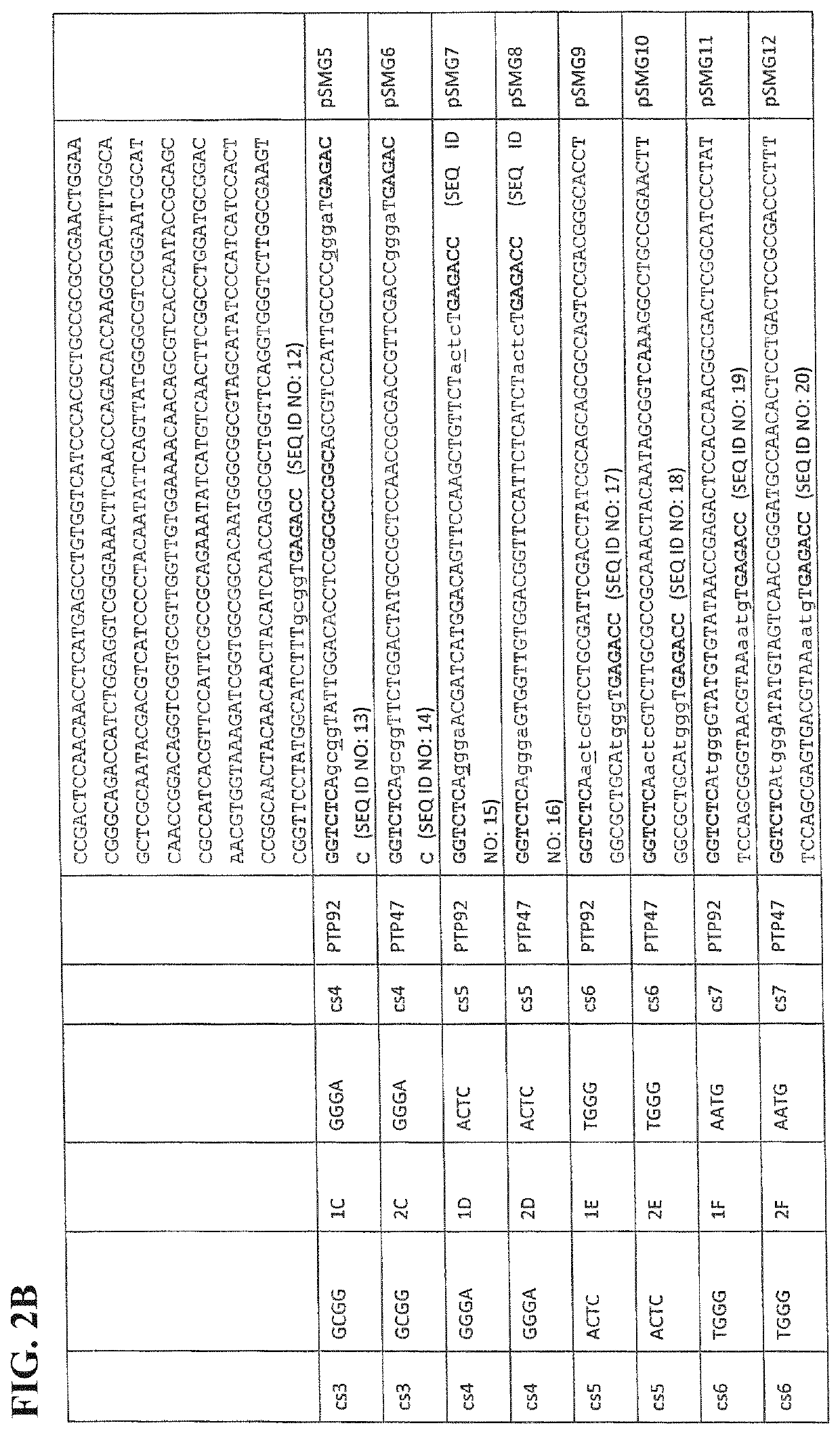Modifying bacteriophage
a technology of modifying bacteriophage and modifying bacteriophage, which is applied in the field of modifying bacteriophage, can solve the problems of limited use and broken host range of bacteriophage, and achieve the effect of improving the host range and causing a drop in the viability of affected cells
- Summary
- Abstract
- Description
- Claims
- Application Information
AI Technical Summary
Benefits of technology
Problems solved by technology
Method used
Image
Examples
Embodiment Construction
[0067]Summary of a method for the genetic modification of a bacteriophage such that it carries chimeric tail fibre variants that confer a desired altered host range.
[0068]As an example only, it is shown here how the amino acid sequences of phage host range determinants, such as those from PTP92 and PTP47 may be aligned, and how the regions of conservation and variation thus identified may be used to divide one of the HRD-encoding genes (such as that from PTP92) into several modules. The sequence alignment can then be used to divide any other HRD-encoding genes under consideration (in this example, PTP47) into positionally-corresponding modules.
[0069]It is shown how the HRD modules thus defined from PTP92 and PTP47 may each be flanked by TypeIIS (BsaI) restriction sites and suitable cleavage sites (cs). It is then shown how a plasmid library consisting of every possible combination of PTP92 and PTP47 HRD modules may be constructed by Golden Gate assembly, to form a plasmid library of...
PUM
| Property | Measurement | Unit |
|---|---|---|
| temperatures | aaaaa | aaaaa |
| acid sequence alignment | aaaaa | aaaaa |
| structure | aaaaa | aaaaa |
Abstract
Description
Claims
Application Information
 Login to View More
Login to View More - R&D
- Intellectual Property
- Life Sciences
- Materials
- Tech Scout
- Unparalleled Data Quality
- Higher Quality Content
- 60% Fewer Hallucinations
Browse by: Latest US Patents, China's latest patents, Technical Efficacy Thesaurus, Application Domain, Technology Topic, Popular Technical Reports.
© 2025 PatSnap. All rights reserved.Legal|Privacy policy|Modern Slavery Act Transparency Statement|Sitemap|About US| Contact US: help@patsnap.com



